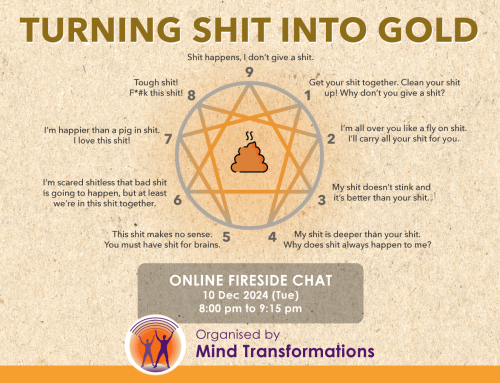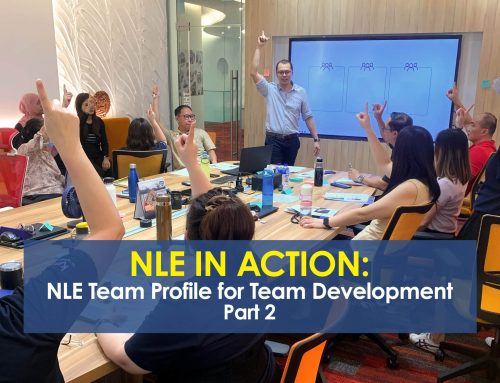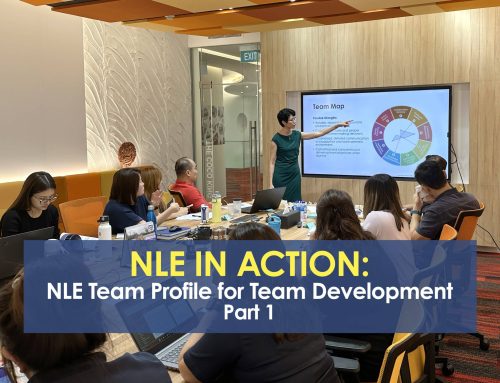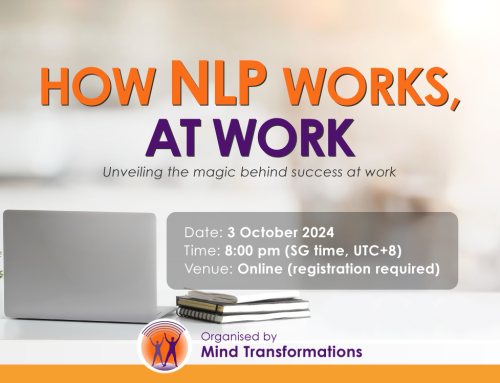Today, we are not limited by choice, but by people. As you look around, you’ll easily find new systems, platforms, technology and processes available. Yet, what stops projects from progressing is getting buy-in from different key stakeholders in project management, especially those who are difficult to manage.
Regardless of your role in the workplace, developing people skills prove to be a vital ingredient for career & personal growth, in this challenging VUCA environment. Interpersonal relationships at work can cause people to give up under demands, frustrations and stress, or it can bring people to the next level of their career advancement.
It is no surprise that among the various people skills, the ability to influence difficult stakeholders is the topmost ability people want to enhance, according to a poll we did in an online seminar.
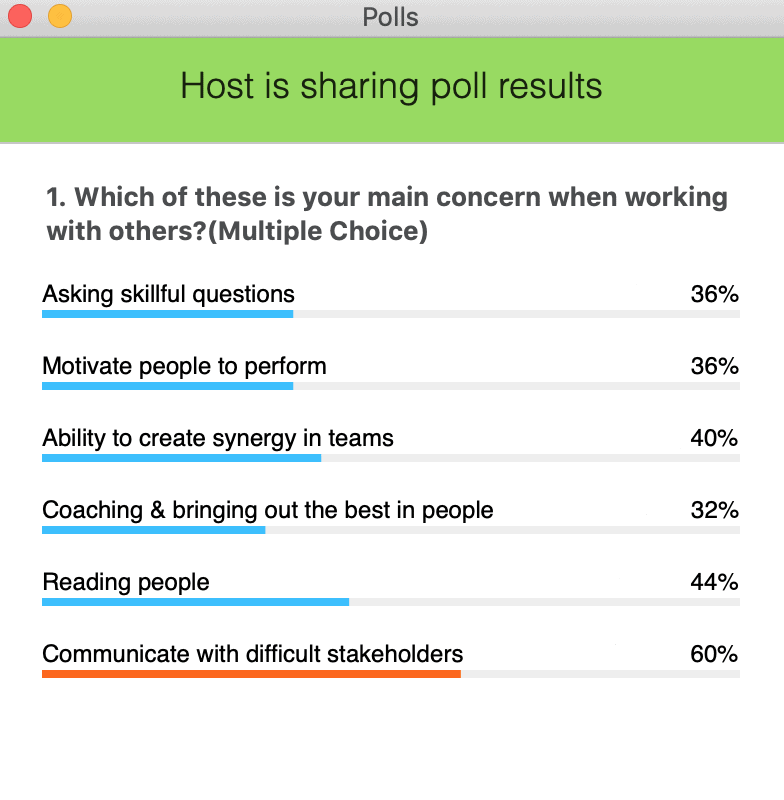
There are no difficult people, only inflexible communicators.

Let’s take a step back to understand people who seem to be challenging to manage.
We deem someone as being difficult to manage when he or she is not in agreement with us. This behaviour is often due to the differences between our cultures, values, personality traits, practices and communication styles.
When we react based on differences, we have a limited range of responding to them. That is where most toxic work culture, misunderstandings and conflicts begin.
What most people don’t realise is that underneath these differences, there is a positive intention they are trying to preserve. Despite their good intentions, they are difficult to work with because they only have a limited ability to satisfying their intentions. If they had other healthier and more resourceful ways of communicating with others, life would be easier for everyone.
That said, the common obstacle in influencing difficult stakeholders is trying to change them. Not only will this backfires, but it also brings about a clash of egos rather than collaborating well together.
A different approach that has benefited many of our practitioners is:
How can you communicate differently with them to induce a more productive response?
Hence, to influence change, it is about becoming a more flexible communicator.
Most communication techniques don’t work well unless they involve a whole-person development. Here's why.

Today, people are getting well-exposed to influence tactics and communication techniques. You might probably experience not trusting certain people despite how savvy their words are, how well-articulated or how persuasive they are.
On the other hand, when people are at their highly-developed and authentic self, they seem to gain trust and win people over effortlessly. They aren’t trying hard to prove themselves or to convince others.
When you are working on your inner fears, struggles and develop your level of maturity as a person, you will find yourself enrolling the right people to your vision and mission.
Here’s an example and beautiful sharing from one of our students, Peh Gee. She had spent 5 years preparing to be amongst the first Singaporean women to summit Mount Everest. In May 2009, the Singapore Women’s Everest Team successfully reached the summit of Mt. Everest.
Besides, without the mastery of a comprehensive self-development, influence and coaching abilities, it would be irrelevant whether someone had a positive intention or not because we would be helpless to direct their attention to a new behaviour anyway. As Einstein pointed out, “You cannot solve a problem with the same type of thinking that is creating it.”
To be able to get buy-in from difficult stakeholders, it is essential to be resourceful at communicating, behaving, making wise decisions and managing emotions on a whole new level. To influence at this level of mastery, we need a whole-person development.
Here are some suggestions for influencing difficult stakeholders based on the approach of whole-person development.
1. Having a high unconditional positive regard for the other person

Our non-verbal cues communicate a stronger message than what we say. When our non-verbal cues aren’t aligned with our intentions, we send across a mixed signal to the other person.
One of the challenges when it comes to dealing with difficult stakeholders is that we might come across as trying too hard to convince them. Often, we let our emotions get in the way because of our judgments. Then we work hard to cover ourselves, even if we are getting bored or not interested in what the stakeholder has to say.
What most people don’t realise is that their subtle non-verbal cues communicate those underlying sentiments through their gestures, facial expression, stance, breathing and so on. Those signals largely influence people at the subconscious level.
How do we resolve this?
You can adopt this approach of holding a high unconditional positive regard for the other person. A method by psychologist Carl Rogers, practising unconditional positive regard means accepting and respecting others as they are without judgment. It is not about trying to be nice or agreeable with the other person. Instead, it is a mindset of aligning with yourself that whatever the person does or says, whether you like them or not, it is worthy of respect. What you are doing is that you are creating a space of openness for the other person to feel safe to express themselves.
When done well, this can diffuse tension between you and the other person and helps to lower the defence mechanism of the stakeholders involved.
Through this, you can start building effective rapport with different stakeholders.
2. Embrace paradox and opposing ideas
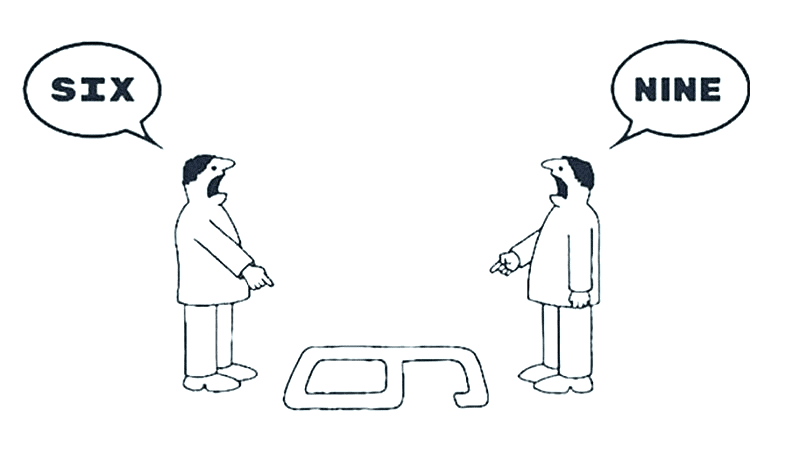
The test of a first-rate intelligence is the ability to hold two opposed ideas in mind at the same time and still retain the ability to function.
~ F. Scott Fitzgerald ~
How do you respond to a key stakeholder who is in opposition to your plan?
Most people either react or resist, hoping that they can win them over.
The reality is, that is not going to happen.
To be able to get the buy-in of stakeholders who hold a different perspective from you, it is useful to expand your outlook to embrace worldviews that are contradictory to yours. That doesn’t mean you are always agreeing or going along with them. It begins by understanding the basis and context of their standpoint. What you are going after is to understand their positive intention behind those perspectives that will then allow you to formulate a win-win proposal.
With that, you’ll then be able to influence them with greater flexibility and with less resistance and conflicts.
The challenge is, it isn’t only about changing your mindset. It requires you to retrain your mind, body and emotions to align yourself to a wider spectrum of choices.
In NLP, this is about chunking your ideas, reframing your internal communication, behavioural & mental flexibility and to adopt multiple perceptual positions.
3. Respond to the deeper intention behind one's behaviour
One of the greatest cause of conflicts or misunderstandings is our own judgment on how others behave.
It gets trickier as we interact in a technological environment.
When someone is late in replying our emails, we may start to think he or she is avoiding us for some reasons or being lazy. The list goes on.
One of the guiding NLP presupposition that our practitioners and professional coaches find useful in building deeper human connection is this:
Behind every behaviour, there is a positive intention.
This is about understanding the deeper meaning behind someone’s behaviour, actions and outcomes.
Using the below example of losing weight as an illustration…
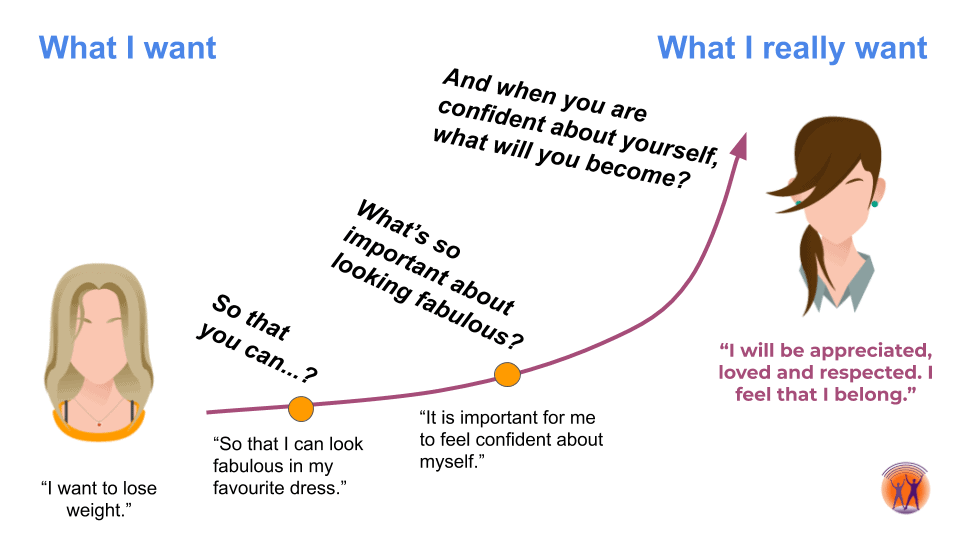
The act of wanting to lose weight is what we can observe with our senses through a person’s behaviour such as the dieting plans, the exercise routine and so on.
If we solely see what’s obvious, we may start forming our own premature judgment or impression. Most of the time, our own personal opinions can be disempowering or even detrimental to the relationship with that person.
In the above example, underneath those set of behaviours, there are different LAYERS of motivation.
When you are able to uncover the deeper intention behind someone’s behaviour, you will start to appreciate this person on a deeper level. Your impression of that person will also start to change as you get to know this person on a whole new level!
When you start communicating with people based on their positive intention, you begin to form a swift and deep connection and trust. The person will immediately feel that at last, someone totally get them!
So then, how do you get to that level of deep trust and human connection, even in a digital world?
First, it is to adopt a beginner’s mindset. Take each interaction with anyone from a fresh new perspective as if this is your first meeting, no matter how well or how long you know this person. By adopting a beginner’s mindset, you are being curious on what is happening as of now – the present moment, without any preconceived notion. Only then, you are able to gather various useful “data points” about that person and be able to coach, develop and influence people on their identity towards deep change.
Next, step into the shoes of the other person. A major aspect of our NLP training and coaching work involves holding the space to adopt different perceptual positions. By doing so, you are able to embrace the different viewpoints of others, including those that are contradictory to yours.
4. Adapt to the changes in role dynamics during any interaction
When two people interact, their status dynamics fluctuate. One of them will adopt a higher status, one of a lower status and sometimes both on an equal status. These change all the time during any interaction.
The status I’m referring to is the status of the role we play in any interaction. It is mainly psychological.
The problem is most people aren’t flexible enough to adapt to the shift of status. They tend to relate to the stakeholder in a particular status, usually associated with their title and position in the organisation. And that limits their options of navigating the situation of high stakes communication.
To effectively get buy-in from the stakeholder, sometimes, we need to lower our status, sometimes we need to lead by stepping up on our status and sometimes to play on an equal or collaborative status.
In NLP, this is known as pacing and leading the other person. The challenge with many practitioners is that they struggle with their own limiting beliefs and values when it comes to shifting roles. One of them is the notion of being perceived as fake.
To utilise this ability skillfully, you need to develop yourself as a whole person by expanding your flexibility as a communicator. To master this, one needs to facilitate an inner state change, to align one’s mindset and visualise on how to communicate oneself at the highest level to be of value to the stakeholder.
5. Raise your BEING of leadership, presence and influence
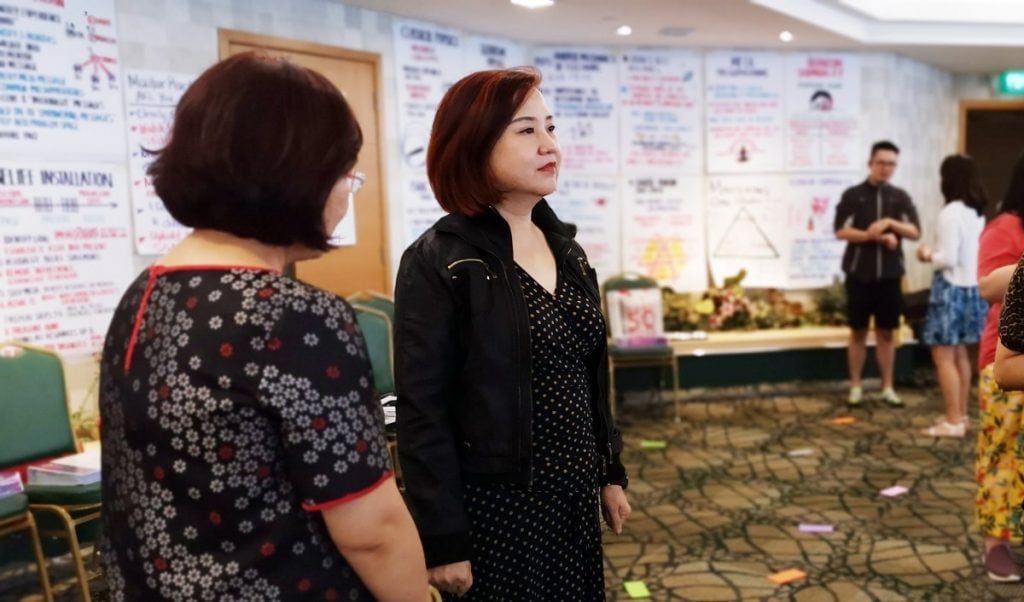
When you’ve earned the respect of others, including people who are difficult to work with, you naturally assume an advantageous position of leadership and influence.
To be able to earn that level of respect, what kind of person do you need to be? How do you develop a deep human presence?
A lot of times, many people strive to influence and convince others with persuasive tactics and strategies. Then they find themselves meeting resistance in others. This approach tends to be an uphill battle.
Imagine if you are the kind of person that even stakeholders who are difficult to work with starts to respect you. It is much easier for them to take your lead and consider your suggestions or proposal.
In NLP, the ‘wisest’ and most ‘compassionate’ maps are those which make available the widest and richest number of choices, as opposed to being the most “real” or “accurate. What this means is to influence with resourcefulness. It includes the ability to make wise judgment calls and think on your feet. By doing so, you become more responsive rather than reactive to the behaviours of others. When you are resourceful, your interaction becomes natural yet influential. You are less restrictive in your communication style.
To achieve that, you need to be your stakeholder’s most trusted advisor. This requires you to think, act, perform and communicate differently from most of your peers; BEING somebody who has taken on the responsibility of their governance, of their decisions, of the best interest as their most trusted counsel. To operate at this level, you’ll need to level up your multi-intelligence capacity: mental flexibility (IQ), emotional intelligence (EQ), physical intelligence (PQ) and spiritual intelligence (SQ).
Remember, as organisations get challenged in the VUCA world, significant stakeholders are called upon to raise their bar in the way they lead, perform and communicate. As a result, they may be perceived as difficult to deal with due to the increasing demands. By raising your multi-intelligence, you are thriving at the level of a growth & abundance mindset necessary to influence them successfully.
To sum up, getting buy-in from difficult stakeholders is all about BEING the change you want to see in them more so than convincing or persuading them. When you communicate at this level, you’ll realise that they are just as challenged as you in this VUCA world. With this commonality, it makes your communication humane. It is then about leading them so that they can better help themselves and in turn, to support you so that all of you can win together.
[inf_infusionsoft_inline optin_id=”optin_2″]

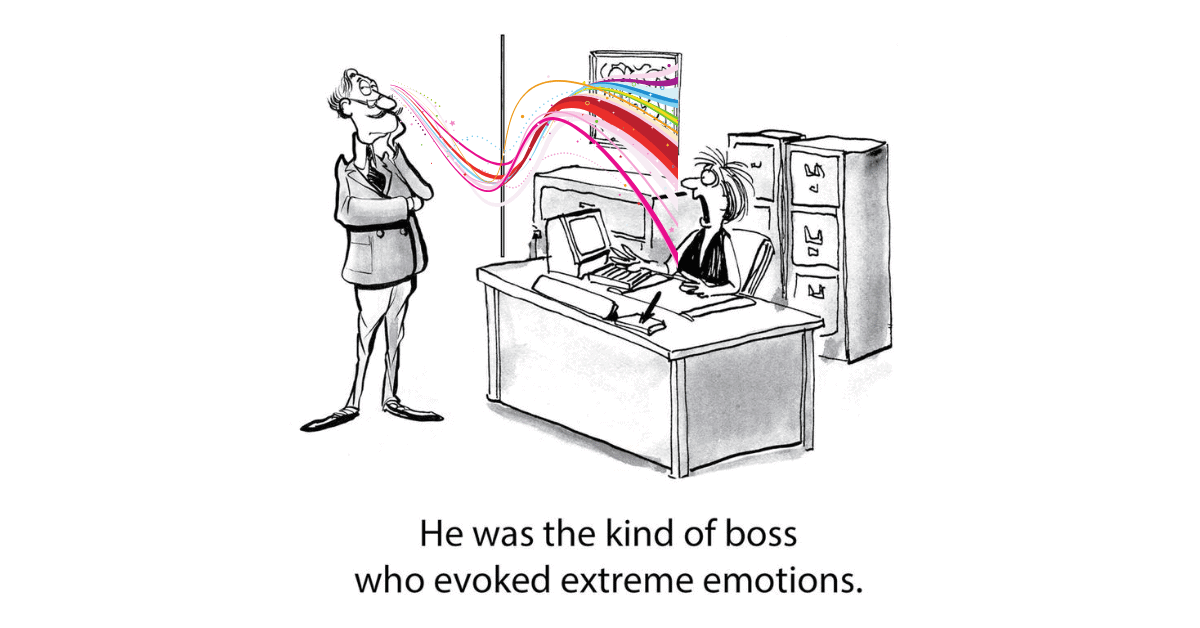
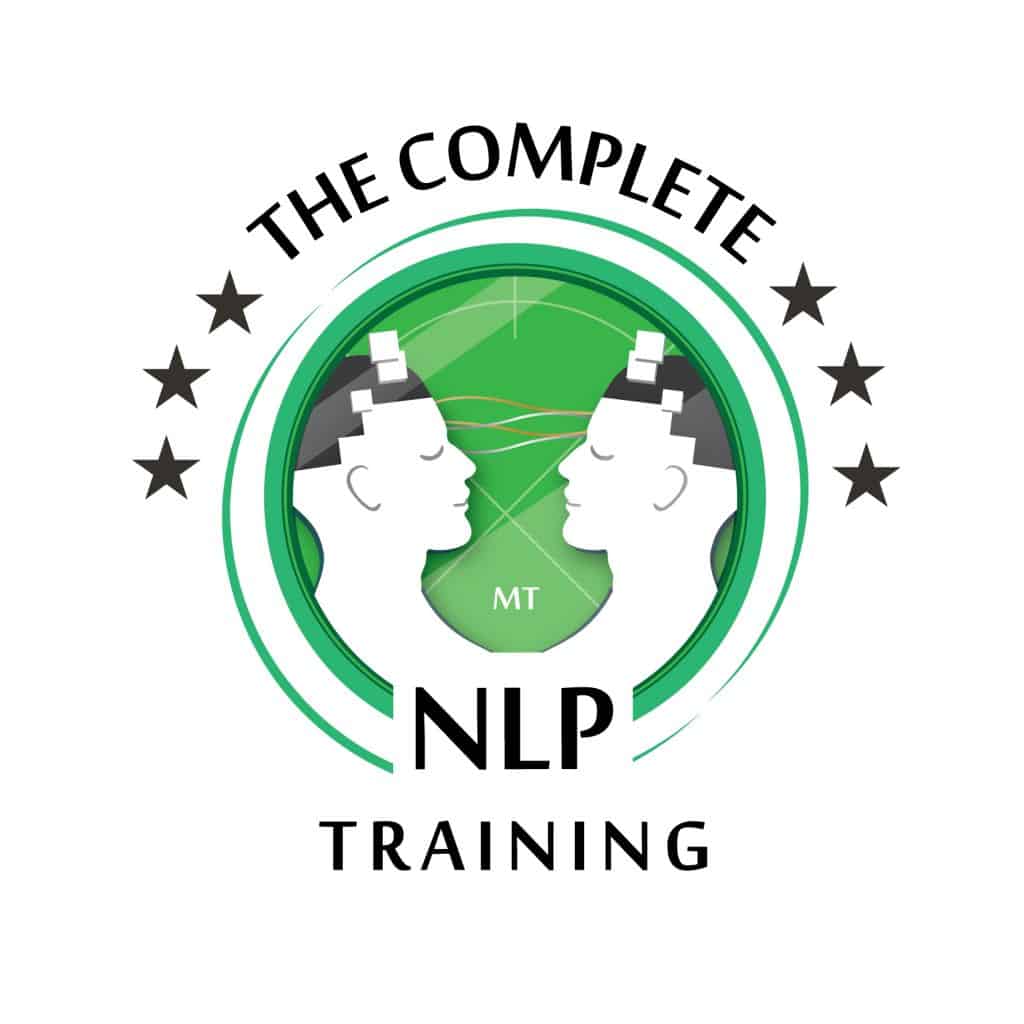 To be an influential communicator who can make an impact at a whole new level, it is your whole person development that will bring you far in your professional and personal growth. Start your whole person development with multi-intelligence NLP training and
To be an influential communicator who can make an impact at a whole new level, it is your whole person development that will bring you far in your professional and personal growth. Start your whole person development with multi-intelligence NLP training and 
